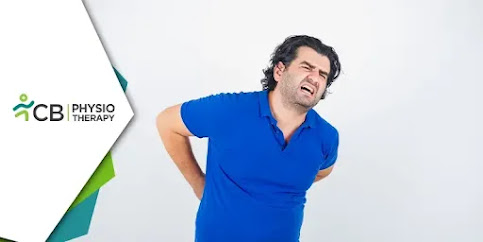Schmorl’s Nodes, though often overlooked, can be a significant factor in the experience of back pain for many individuals. Understanding the relationship between Schmorl’s Nodes and back pain is crucial for effective management and treatment. In this blog, we’ll explore how and why Schmorl’s Nodes can contribute to back pain and discuss the invaluable role of physiotherapy in addressing this issue.
Understanding Schmorl’s Nodes
What are Schmorl’s Nodes? Schmorl’s Nodes are herniations of intervertebral disc material into the vertebral body itself. Unlike traditional disc herniations that protrude outward, Schmorl’s Nodes involve the displacement of disc material into the spongy bone of the vertebrae. These nodes can occur at any level of the spine and are often detected incidentally in imaging studies.
Why Do Schmorl’s Nodes Cause Back Pain?
Schmorl’s Nodes can be a source of back pain due to several factors:
1: Compression of Nerves: When a Schmorl’s Node protrudes into the vertebral body, it can compress nearby nerves, leading to pain that radiates from the spine to other areas of the body.
2: Inflammation: A Schmorl’s Node can trigger an inflammatory response in the surrounding tissues, resulting in localized pain and discomfort.
3: Altered Spinal Mechanics: The displacement of disc material into the vertebral body can disrupt the normal biomechanics of the spine, leading to increased stress on surrounding structures and contributing to pain.
4: Degenerative Changes: Schmorl’s Nodes are often associated with degenerative changes in the spine, such as osteoarthritis and disc degeneration, which can further exacerbate pain symptoms.
Role of Physiotherapy
How Physiotherapy Can Help?
Physiotherapy is crucial in managing back pain caused by Schmorl’s Nodes. Here’s how physiotherapy interventions can effectively address this issue:
1: Pain Management: Physiotherapists employ various modalities, such as heat therapy, TENS (transcutaneous electrical nerve stimulation), laser therapy, therapeutic ultrasound therapy, manual therapy, and dry needling, to alleviate pain associated with Schmorl’s Nodes.
2: Strengthening Exercises: Specific exercises targeting the muscles surrounding the spine can improve stability and support, reducing the strain on affected vertebrae and alleviating pain.
3: Core Stability Training: Strengthening the core muscles helps improve spinal alignment and stability, reducing the likelihood of exacerbating symptoms.
4: Postural Correction: Physiotherapists guide maintaining proper posture during daily activities to alleviate strain on the spine and prevent further complications.
5: Flexibility and Range of Motion Exercises: Stretching and mobilization techniques help improve flexibility and range of motion in the spine, reducing stiffness and discomfort associated with Schmorl’s Nodes.
6: Education and Lifestyle Modification: Physiotherapists educate patients about lifestyle modifications, ergonomic principles, and proper body mechanics to minimize strain on the spine and prevent the recurrence of symptoms.
Schmorl’s Nodes can indeed be a source of back pain, impacting the quality of life for those affected. However, through a comprehensive approach that includes physiotherapy interventions, individuals can effectively manage their symptoms and improve spinal health. By understanding the connection between Schmorl’s Nodes and back pain and recognizing the vital role of physiotherapy in addressing this issue, individuals can take proactive steps toward recovery and long-term well-being.
